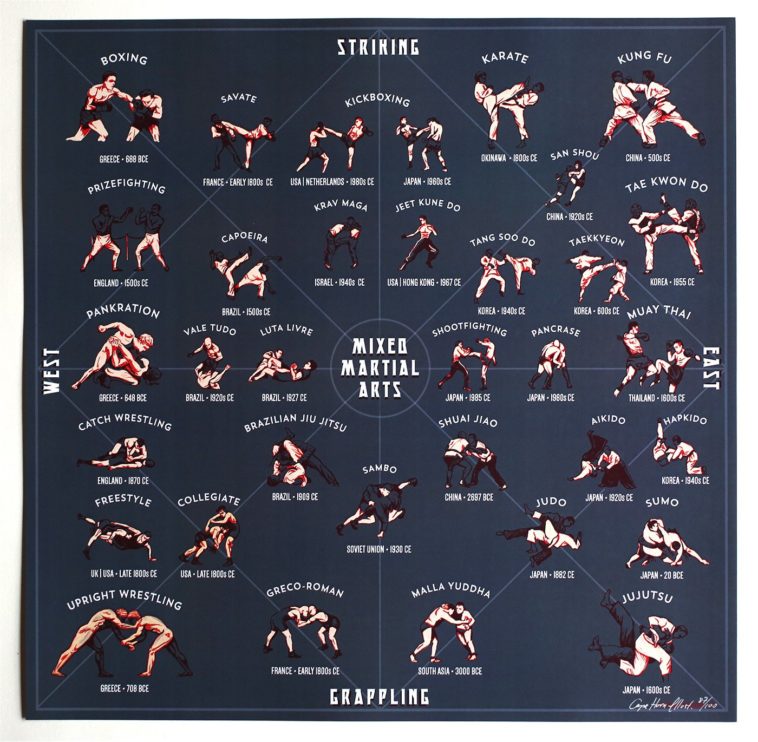Taekwondo Forms: Understanding The Essentials And Their Relevance
Taekwondo Forms: Understanding The Essentials And Their Relevance
Blog Article
Uploaded By-Lindegaard Westergaard
Did you understand that there more than 20 different taekwondo forms, each with its very own one-of-a-kind sequence of activities and methods? These forms, also known as poomsae, play an essential function in the technique and advancement of taekwondo professionals.
Yet just what are these kinds, and why are they so significant? In this discussion, we will discover the basics of taekwondo forms, their origins, and the crucial elements that make them an integral part of this fighting style.
Whether you're a newbie or a seasoned practitioner, comprehending the value of taekwondo forms will deepen your admiration for this old practice and enhance your journey in the direction of mastery.
Origins and Evolution
The beginnings and advancement of Taekwondo can be mapped back to old fighting styles practices in Korea. It was established over 2,000 years earlier and has actually since become a preferred and internationally recognized sport.
Taekwondo was heavily influenced by different Korean fighting styles styles, such as Taekkyon and Subak, along with Chinese fighting styles. It was initially utilized as a means of self-defense, however gradually, it evolved right into an affordable sporting activity that focuses on striking techniques and high kicks.
In the 20th century, Taekwondo underwent a significant improvement and was standard into its contemporary form. The Korea Taekwondo Organization played an important function in this procedure, aiding to establish guidelines, techniques, and forms that are still adhered to today.
Key Elements and Strategies
Currently let's discover the essential elements and strategies of Taekwondo. To fully comprehend the key elements and methods, it is essential to dig much deeper right into the complying with subtopics:
- Positions: Taekwondo stresses the proper use of positions, such as the front position, back position, and equine stance. These positions supply stability, balance, and power in carrying out numerous techniques.
- Strikes and Kicks: Taekwondo is renowned for its effective and dynamic kicks, including the front kick, roundhouse kick, and side kick. Strikes, such as punches and knifehand strikes, are also crucial methods in Taekwondo.
- Blocks and Protection: Efficient protection is crucial in Taekwondo. Blocks, such as the high block and reduced block, are made use of to protect against incoming attacks. Appropriate timing and positioning are essential to efficiently safeguarding oneself.
Benefits and Influence
One of the significant advantages of exercising Taekwondo is the renovation of physical fitness and general well-being. By participating in martial arts kid full movie , you can enhance your cardio health, strength, flexibility, and endurance. Taekwondo includes a variety of activities that target various muscular tissue groups, helping you construct a strong and toned figure.
Furthermore, this martial art promotes psychological health by lowering tension and anxiety levels. The discipline and focus called for in practicing Taekwondo can assist enhance your focus and enhance your capacity to handle tough circumstances.
In addition, the method of Taekwondo infuses a feeling of self-esteem, self-discipline, and self-control, which can favorably affect different locations of your life. On the whole, exercising Taekwondo can cause a healthier and extra well balanced way of living.
Recommended Internet site have it! Taekwondo types aren't simply mere routines, however a depiction of the rich history and evolution of this martial art. By mastering the key elements and techniques, experts can gain many physical and mental benefits.
From boosted adaptability and stamina to improved emphasis and technique, taekwondo types have an enduring influence on those that practice them.
So, whether you're a beginner or a seasoned martial artist, embrace the power of these kinds and let them take you on a trip via time.
